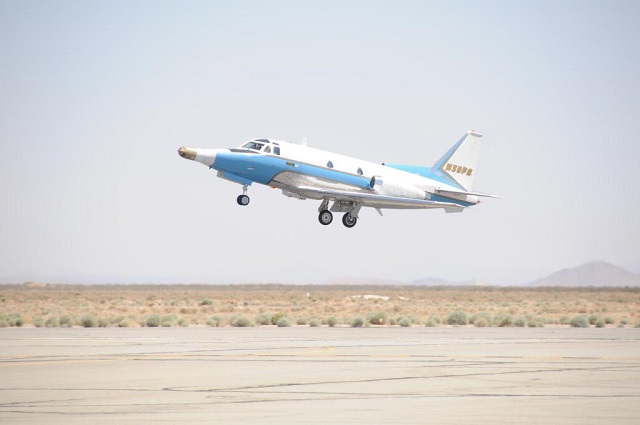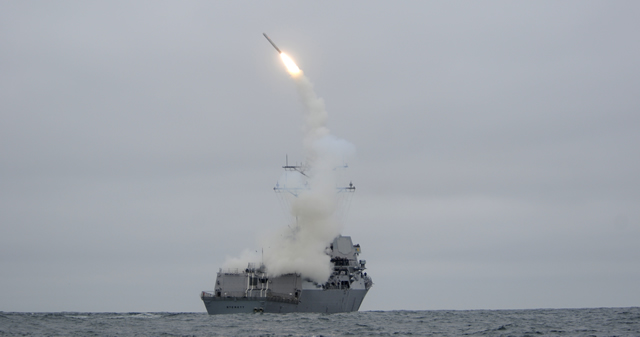 T-39
aircraft with Raytheon modular, multi-mode processor. Picture: Raytheon T-39
aircraft with Raytheon modular, multi-mode processor. Picture: Raytheon |
|||
The captive
flight test, using a modified Tomahawk Block IV missile nose cone, will
be designed to demonstrate the processor's ability to broadcast active
radar as well as passively receive target electromagnetic radiation, which
was demonstrated in February 2014. This is a critical step in enabling
the missile to strike moving targets on land and at sea. "Completion of this test and last year's passive seeker test will demonstrate that Tomahawk can hit moving targets on land and at sea," said Mike Jarrett, Raytheon Air Warfare Systems vice president. "Raytheon is working to quickly and affordably modernize this already advanced weapon for naval warfighters." |
|||
 PACIFIC OCEAN (June 23, 2010) A Tomahawk missile begins its tip-over phase
of flight after being launched from the guided-missile destroyer USS Sterett
(DDG 104) (U.S. Navy photo by Mass Communication Specialist 1st Class
Carmichael Yepez/Released)
PACIFIC OCEAN (June 23, 2010) A Tomahawk missile begins its tip-over phase
of flight after being launched from the guided-missile destroyer USS Sterett
(DDG 104) (U.S. Navy photo by Mass Communication Specialist 1st Class
Carmichael Yepez/Released) |
|||
During
the test, planned for the second quarter of 2015, the nosecone of a Tomahawk
Block IV missile will be equipped with active and passive radio frequency
antennas integrated with Raytheon's new modular, multi-mode processor
and fitted to a T-39 aircraft. Flying at high subsonic speed and at varying
altitudes, the aircraft will simulate a Tomahawk flight regime. The multi-mode
seeker and multi-function processor will operate the active radar against
fixed and mobile targets on land and at sea, in a complex, high density
electromagnetic environments. |
|||
Raytheon's Tomahawk Cruise Missile Will Soon be Able to Hit Moving Targets on Land & Sea
- Posted On










